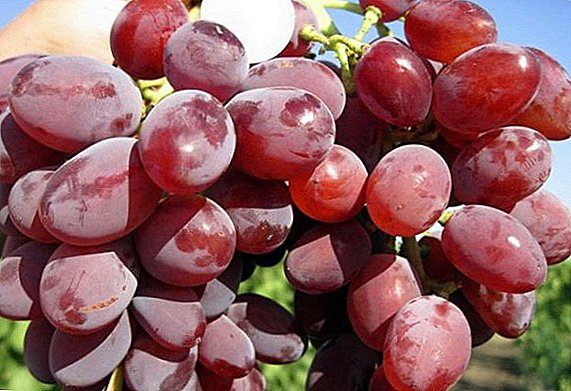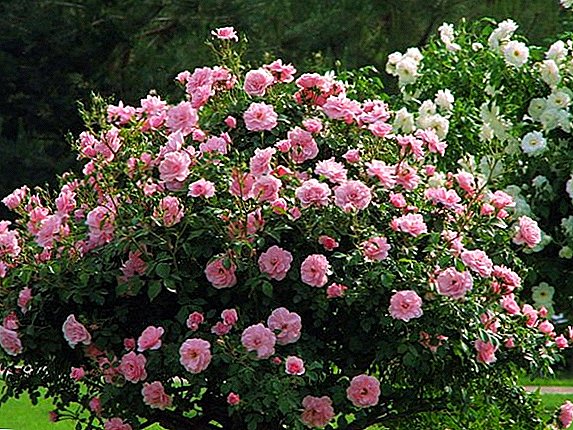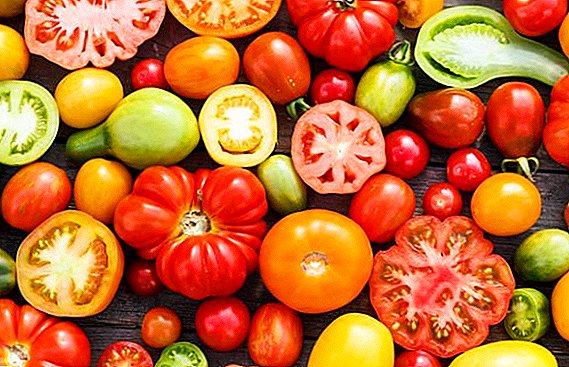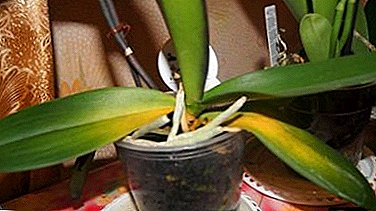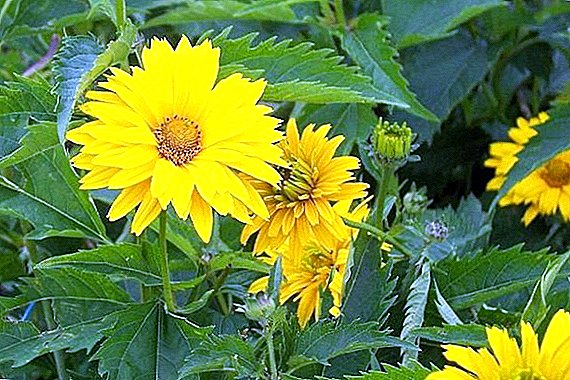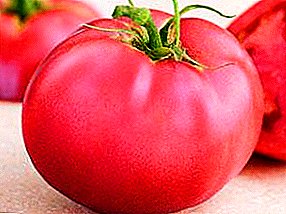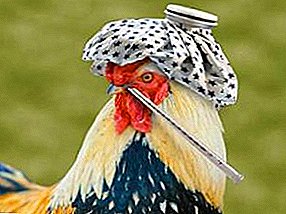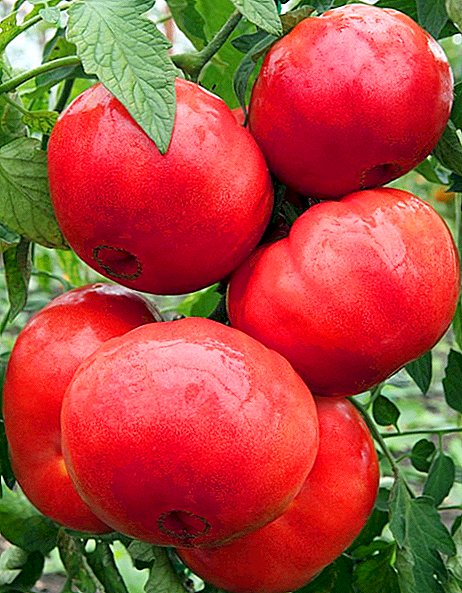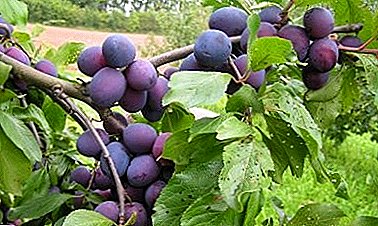
Nick Plum variety is not yet widespread, but every year it is gaining more and more popularity due to the excellent taste characteristics of the fruit.
They can both be consumed fresh or used to make jams, preserves, and juice with pulp.
Nick Plum: a description of the variety
For grade Nick characteristic average growth, and sometimes the strong growth of trees. By fifteen years they can reach four meters in height. The tree has a wide-oval spreading crown of medium thickness. The color of the bark on the trunk can be dark gray or gray-black.
For the bark is characteristic strong roughness and the presence of medium or strong longitudinal cracking. The trunk stitch is expressed very weakly or not at all. The tree produces knotted shoots, which at a young age can change their color depending on the lighting.
In the sun, they have a pinkish-brown color, and in the shade they become light green. A little later, shoots acquire brown-black color. Longitudinal yellow-brown cracks appear on them, and the shoots look striped. This is a characteristic feature of the variety Nick.
 Vegetative buds are cone-shaped and medium in size, and generative buds are small and egg-shaped.
Vegetative buds are cone-shaped and medium in size, and generative buds are small and egg-shaped.
The leaf blade is characterized by an elongated oval shape with a pointed tip.. Its base can be either wedge-shaped or arc-shaped.
The length of the leaf blade is usually from six to ten centimeters in length and from four to six centimeters in width.
Blade has a leathery texture. From above it is green, smooth and shiny, and from below it is light gray-green and pubescent along the veins.
Blade is distinguished by double-toothed edges and moderate serrations.
For a tree of this sort, small petioles with a pair of small pieces of iron and a lack of stipules with a maroon anthocyanin color are characteristic. Inflorescence often consists of two flowers, but may have one or three flowers.
Flowers are medium sized and cupped shape. They are characterized by closed corrugated rounded petals. The length of the stamens is from five to seven millimeters, and the pistil with the ovary is from ten to twelve millimeters.
Plum varieties Nick distinguished by rather large oval shaped fruitswhose weight ranges from thirty to forty grams, but with a small yield may be a little more. Fruit is characterized by non-equivalence. in relation to the abdominal suture and the almost complete absence of flattening from the sides.
The fruits have a rounded tip, in the middle of which there is a small groove, an oval base and a shallow funnel. The abdominal seam has a weak development and does not crack. In appearance, the fruits of plum varieties Nika resemble Hungarian.
Initially, the fruit has a green peel, which when ripe becomes dark purple with a thick bloom of blue. The flesh has a yellow-green color, and when fully matured it turns brownish yellow..
For fruits characteristic dense texture, and when overriding, they become soft and very juicy. For them characteristic sweet taste with a slight sourness and a slight tinge of tartness. According to the tasting scale, the fruits of the Nika plum variety are estimated at 4.3 points. Fruits differ in a long fruit stem and a small bone of an elongated and oval form.
A photo
More information from the plum variety "Nika" can be found in the photo below:



Breeding history and breeding region
Nick plum cultivar was bred at the Rossosh zonal experimental gardening station. It was received by A.Ya. Voronchikhina by crossing hybrid forms. In 1994 this variety was entered in the register and allowed for cultivation in the Central Black Earth region.
Nowadays, it is spread fairly weakly and is grown mainly in home gardens of the north of the Rostov region, as well as the south of the Belgorod and Voronezh regions.
Specifications
Flowering plum trees varieties Nika takes place in the middle term. The the variety is self-infertiletherefore, if during flowering the weather conditions do not contribute to the flight of insects, then the harvest may be completely insignificant.
The most suitable pollinators for plum varieties Nika can be called: Early Donetsk, Hungarian, Renklod Soviet and Hungarian Donetsk.
Fruiting plum trees Nika varieties begin in the fourth or fifth year and have good skoroplodnost. Fruits ripen by August. The yield is quite high - up to thirty-five kilograms of fruit can be harvested from one tree, but there were cases when the crop was twice as high as this figure.
These trees tolerate winter, but flower buds have a weaker frost resistance. Fruits of a plum of a grade of Nick characterized by good transportability and excellent separability of the stone from the pulp.
Planting and care
 For planting plum trees of the Nika variety, one should choose a moisture-intensive soil, where the groundwater level is no more than two meters.
For planting plum trees of the Nika variety, one should choose a moisture-intensive soil, where the groundwater level is no more than two meters.
The best time for planting is spring, but if you bought saplings in the fall, then you need to prikopat and cover with pine branches, and with the onset of winter to cover with snow.
When the snow melts, the seedlings need to be inspected for rodent damage and branch breakage. It is necessary to dig up saplings just before planting.
It is best to grow the Nike variety plum in places well lit by the sun, which are well protected from strong cold winds. You can plant trees along the fence, but only on the sunny side.
IMPORTANT! If tall trees grow on your site, then it is necessary to plant a plum on the south side of them so that they do not cast a shadow on it.
Pits for plum planting can be prepared in autumn or early spring, in about a couple of weeks. The depth of the pit should be from forty-five to fifty centimeters, and the diameter should be from sixty to seventy centimeters. Digging holes need at a distance of three meters from each other.
The soil dug out of the pit must be mixed with humus in a 2: 1 ratio. Before planting, it is necessary to hammer a peg in the center of the pit and build a cone out of the prepared soil around it. Around this cone you can evenly disperse the root system.
On the north side of the peg, you should install a plum seedling, and then fill the pit for planting with earth, periodically shaking the seedling so that there are no gaps between the roots. As soil is poured in, it must be tamped down with the help of hands. Make sure that the sapling is clearly positioned vertically.
After planting, make a roller around the tree and roll it out of the ground. For one tree will be enough two or three buckets of water. After absorbing water, the soil must be mulched. The seedling should be tied to a peg with a soft cord.
Caring for a nick variety plum is not much different from caring for other fruit trees, however special attention should be paid to its moisture-loving.
In dry weather, it is necessary to water the plum in June and July. and then - in the last days of September.
 The most preferred method of irrigation is watering under the root, carried out using a special irrigation installation.
The most preferred method of irrigation is watering under the root, carried out using a special irrigation installation.
For watering should use water heated by the rays of the sun.
The best fertilizer for plums are magnesium., therefore, before the autumn garden digging, you should use them together with phosphate fertilizers.
About one hundred grams of double superphosphate and potassium magnesia should be added under each tree.
In early spring, you can enrich the soil and nitrogen fertilizers. In the summer, fertilizing infusion of bird or cow dung is carried out. The first top dressing is usually given immediately after the tree begins to bloom, and after two or three weeks another feed is given.
When a tree reaches two or three years old, a lot of shoots appear on it, which need to be shortened for proper crown formation. Shoots on the trunk should be removed in a green state. We should not forget about the removal of basal shoots. It is necessary to carry out this procedure about four times during the summer.
Diseases and pests
Nick's plum variety has a very strong resistance to most fungal diseases. Neither monilioz, nor polystigmoz, nor klyasterosporioz this tree is not terrible.
To protect the fruit special pheromone traps can be used from the plum moth moththat will lure the males of this insect. But if the pest is observed in significant quantities, then the most effective way to get rid of it will be insecticidal spraying.
The first time it should be carried out at the end of May, and the last - no less than a month before the harvest. The interval between spraying should be at least two weeks.
Variety plum Nick has both certain advantages and some disadvantages. The main advantages This variety is a good frost resistance, high yield and excellent consumer characteristics of the fruit. well and one of the main drawbacks can be called an irregular yield, with which you can quite cope with pollinators.


